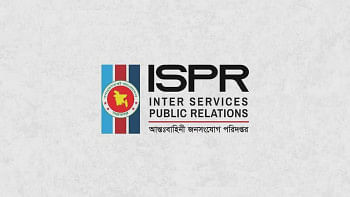Barishal tops poverty rankings, replacing Rangpur

Bangladesh's poverty map has changed as Barishal now has the highest percentage of people living in poverty among all the eight divisions, according to the Bangladesh Bureau of Statistics (BBS).
Economists think increasing climate vulnerability is redrawing the poverty map.
Previously, the north-western division of Rangpur was listed as the poorest division of the country.
In 2016, Barishal ranked fifth in poverty while Rangpur had the highest rate of poverty. Rangpur then had 47.23 percent of its population classified as poor.
Six years later in 2022, Rangpur drastically reduced its poverty rate to 25 percent.
In contrast, Barishal's poverty rate rose slightly to 26.6 percent from 26.49 percent, as per the Poverty Map 2022 published by the BBS yesterday.
At the district level, Madaripur recorded the highest poverty rate in the country at 54.4 percent -- nearly three times the national average of 18.7 percent.
Noakhali had the lowest poverty rate with 6.1 percent, or one-third of the national average, according to the updated map launched by the national statistical agency at the Bangabandhu International Conference Centre in Dhaka's Agargaon.
The updated map is meant to provide a clearer picture of the country's socioeconomic conditions, helping policymakers and development agencies implement targeted poverty reduction initiatives.
"This map will help policymakers take proper intervention measures aiming to reduce poverty," said Md Mahbub Hossain, secretary of the Statistics and Informatics Division of the planning ministry.
At the upazila level, Dasar in Madaripur had the highest poverty rate of 63.2 percent while Dhaka's Paltan recorded the lowest with 1 percent.
Outside the capital, Double Mooring Thana in Chattogram had the lowest poverty rate of 1.1 percent.
According to the new map, the top five districts with the highest poverty rates are Madaripur, Narsingdi, Pirojpur, Kishoreganj and Chapainawabganj.
Besides, the five least poverty-stricken districts are Noakhali, Dhaka, Meherpur, Khulna and Feni.
To prepare the map, the BBS used the Cost of Basic Needs. This method calculates the cost of a bundle of food and non-food items that meet basic consumption needs.
CLIMATE VULNERABILITY REDRAWING POVERTY MAP
Mustafa K Mujeri, executive director at the Institute for Inclusive Finance and Development, an independent non-profit institution, said that poverty pockets have changed over time mainly due to changing climate patterns and government measures to fight poverty.
He said poverty pockets were largely in the northern swathe of Bangladesh, particularly in Kurigram and Rangpur, and some areas of southern Bangladesh.
"That has changed with time. Increased activities of non-government organisations and targeted government programmes to Monga-prone areas [areas susceptible to seasonal hunger] helped the regions recover from impoverishment," Mujeri said.
"The new poverty pockets are natural calamity-prone areas, with increased frequency of disasters," he added.
Regarding Barishal becoming the highest poverty-prone district, Mujeri said the division is a disaster-prone area where salinity intrusion is rising due to various factors, including the rising sea level.
"Barishal was once a food basket for the country. It no more holds that crown," he said, adding that crop diversity and productivity have also declined in the division.
"Our climate vulnerability is increasing and it is influencing poverty pockets to a higher extent," the economist said.
OLD DATA RAISES QUESTION
Although economist Selim Raihan agrees with Mujeri over climate vulnerability and subsequent changes to the poverty map, he raised questions about the data.
"There was a conundrum about the data during the Hasina regime, including gross domestic product and poverty rate," said Raihan, executive director at the South Asian Network on Economic Modeling, a local think-tank.
He said that in the last 15 years, there was a tendency to show good progress in poverty reduction in northern areas.
"This tendency could have led to flawed data on Rangpur," Raihan added.
The poverty rate in Rangpur was 47.2 percent in 2016 and dropped to 24.8 percent in 2022, according to the Household Income and Expenditure Survey 2022.
"I must raise the question of how the poverty rate shows a dramatic improvement in the span of seven years in Rangpur," he said.

 For all latest news, follow The Daily Star's Google News channel.
For all latest news, follow The Daily Star's Google News channel. 



Comments